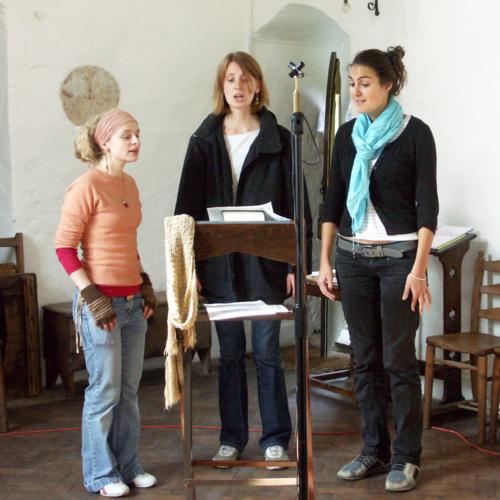Practical Usage
Recording Hardware
The key thing that is required for recording with the TetraMic is also required for any recording in B-format - four channels with accurately matched gain. The Core Sound 4Mic will provide this; but the most readily available option at present is the MOTU Traveler, which is what I use. This firewire interface has four mic preamps which are of excellent quality and quiet; but most important, they have digitally controlled gain so that the channels can be matched to an accuracy of a fraction of a dB. MOTU provide Mac and Windows drivers, and I believe there is a working Linux driver (not from MOTU) though I haven't seen it in use.
In the absence of matched input channels, the next best thing is to make up a cable that will feed a test signal to all four channels at once. Then, when the levels have been set for a recording, a test signal can be recorded which will allow the gains to be matched after the event.

Recording Software
Whatever software you have that is capable of multichannel recording can be used, so it is really your choice from the software you have available. I use AudioMulch with a number of VSTs, as I have described elsewhere on this site.
The picture shows my recording setup in use with my TetraMic during a concert at The Warehouse, a studio venue near Waterloo in London. The whole kit except the mic stand and a coil of four-channel mic cable fits into a rucksack.

On the stand
Because the TetraMic is so small, it is very inconspicuous - though the stand may not be! I generally run an unbalanced cable to the bottom of the stand, and have the PPAs under the legs feeding into a robust four-pair mic cable. The unbalanced cable is too small for the usual clips to hold tight, so I just wind it loosely round the stand. The picture shows the mic hanging downwards on the end of a boom (the Zoom H2 recorder in the foreground is another interesting bit of kit, but not for discussion just here).
The miniature XLR plugs certainly need careful handling as they are so tiny - but they feel remarkably positive in use, and I have no great concerns about them. One of my cables had a dry joint, but I sent it back to Core Sound and was returned a repair or replacement - I'm not sure which.
In the future I might consider getting the ETS InstaSnake which would reduce the weight of the cable to be hauled around. I understand that Core Sound can supply this.

This picture shows the mic standing on a simple vertical stand. The mount is not visible, as it is in line with the camera view, on the other side of the stand. This shows how little visibility the mic adds to the stand itself - apart from the brass colour!
The singers are an enterprising group who call themselves VoiCE - the capital letters being their initials. You can find some of my recordings of them here.
I haven't yet had any opportunity to suspend the mic on a rope; I may add a photo when I do.

Directional Alignment
The Core Sound logo is on the front of the TetraMic's body; however, it is not very easy to ensure that the mic is pointing exactly as required because the four capsules point in such strange directions if not viewed in precisely the cardinal directions. In these directions they should be seen as a cross (X), and if you can get into position to see this, it can be a useful check. Of course, it is simple to rotate the B-format output to correct any errors.
This is probably as good a place as any to remark that VVMic caters for different orientations of the TetraMic in the stand. I have used it upside down, by telling VVMic to invert Y and Z, and there is a setting for endfire use (in which the body of the TetraMic points forwards), which swaps X and Z, while also inverting one of them.

